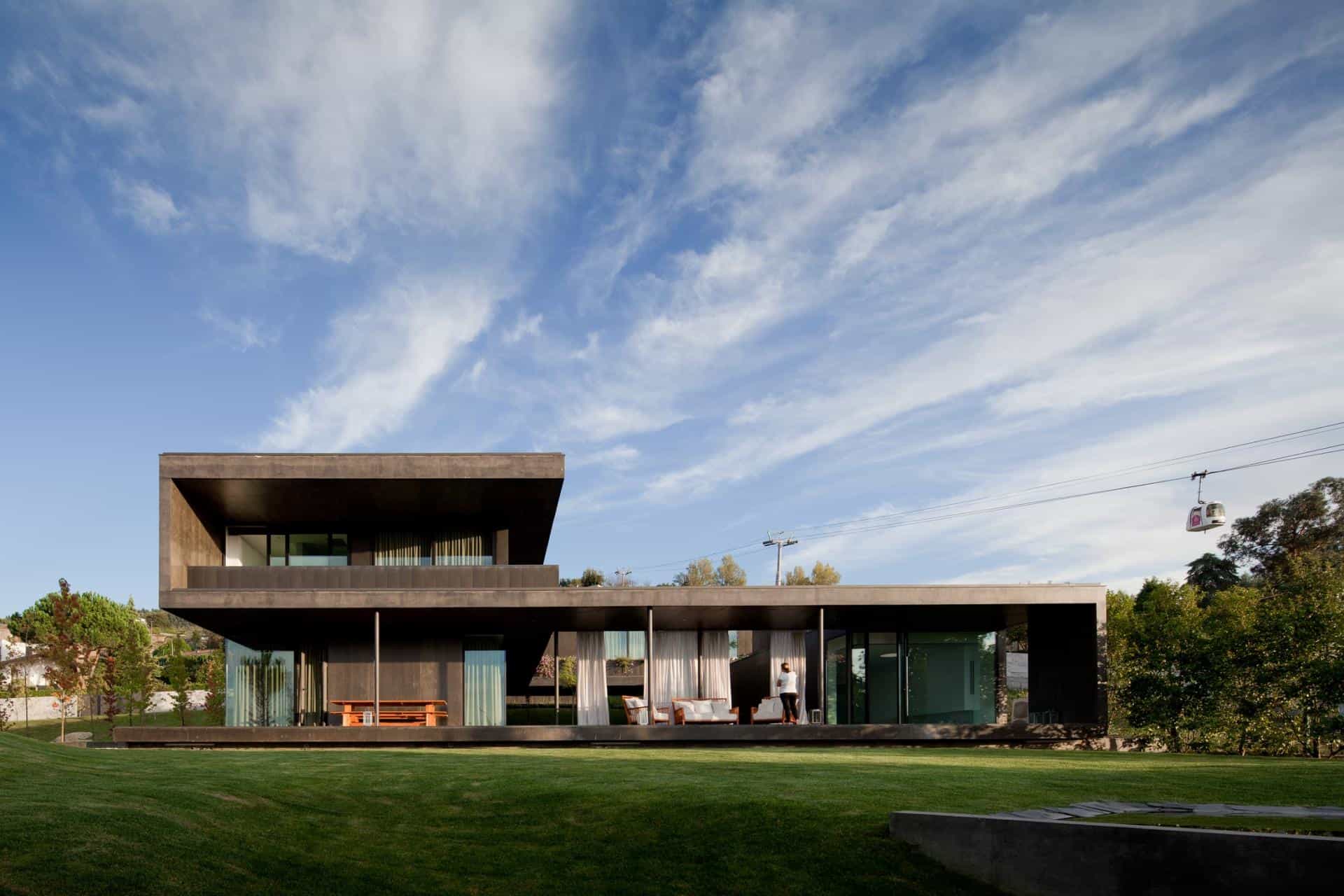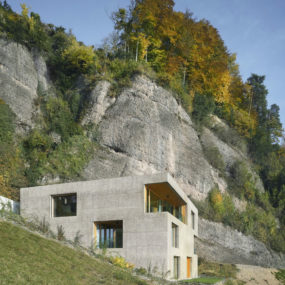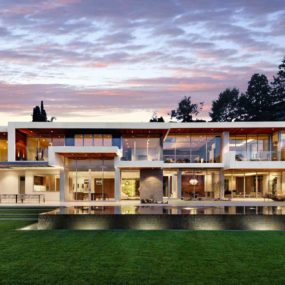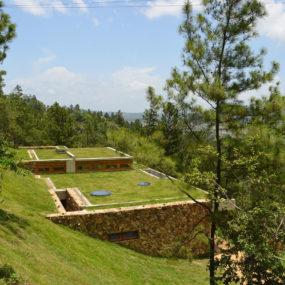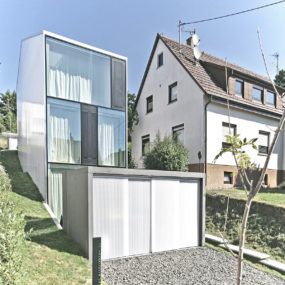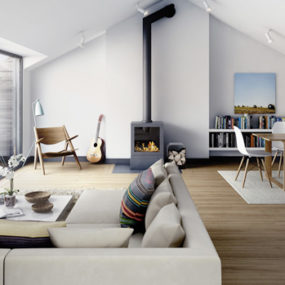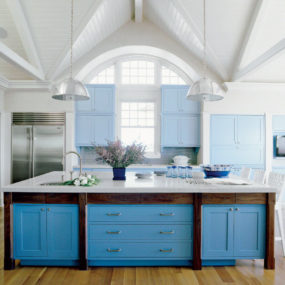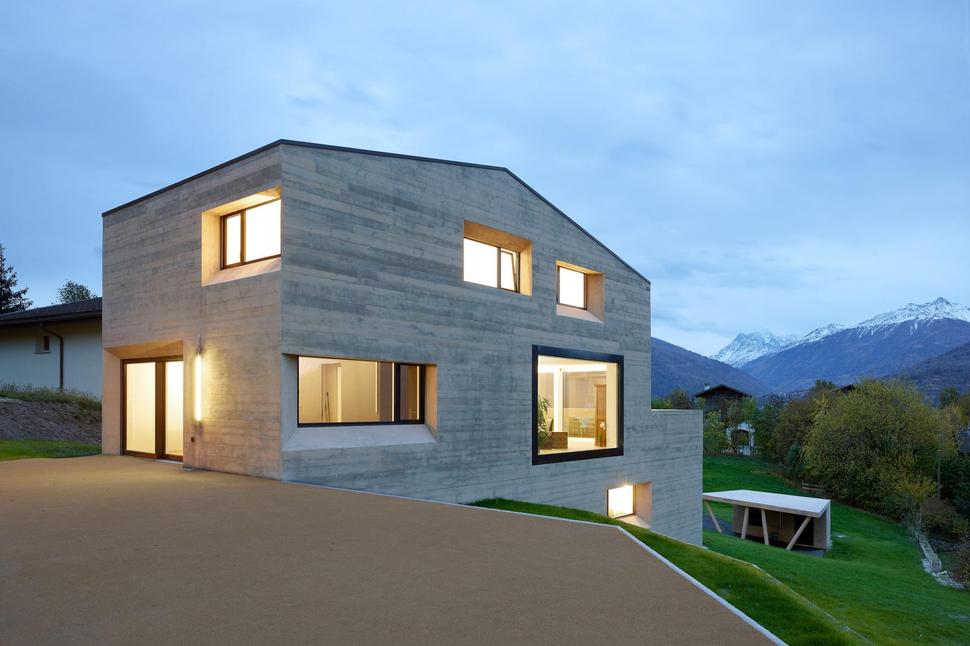
Built on a grassy hillside in a Swiss mountain valley, this family house takes advantage of its sloping lot and scenic location, integrating both into its overall design. A project by Evéquoz Ferreira Sàrl, the house spans three stories, partially rising out of the landscape near its front edge. Windows are present in nearly every room of the house, each one giving its own unique perspective of the mountain ranges beyond. Most of these windows are recessed into the sides of the structure in an angular fashion, adding visual interest to the exterior wall surface. Another means employed by the architects to add visual interest to their design is the choice of exterior finish, which is concrete treated and applied to resemble boards of wood while revealing its more contemporary nature up close. The architecture of the house extends beyond its interior bounds as well, with extensions defining a tiered lawn and matching carport.
Inside, the basic rules governing decor focus on minimalism, with a nearly universal theme of white walls and light wooden floors. This composition helps to maximize the light entering the house through its many windows, even in the partially submerged rooms of its lowest floors. On the middle, main level, the kitchen presents a black-finished contrast to the lighter motif elsewhere, and a set of stairs leading up to that level exhibits angular wall and ceiling shapes which are not repeated anywhere else. Under the sloping roof of the top floor, a master suite and two subordinate bedrooms take advantage of the most unobstructed viewpoints of the house with windows showcasing every sightline available.
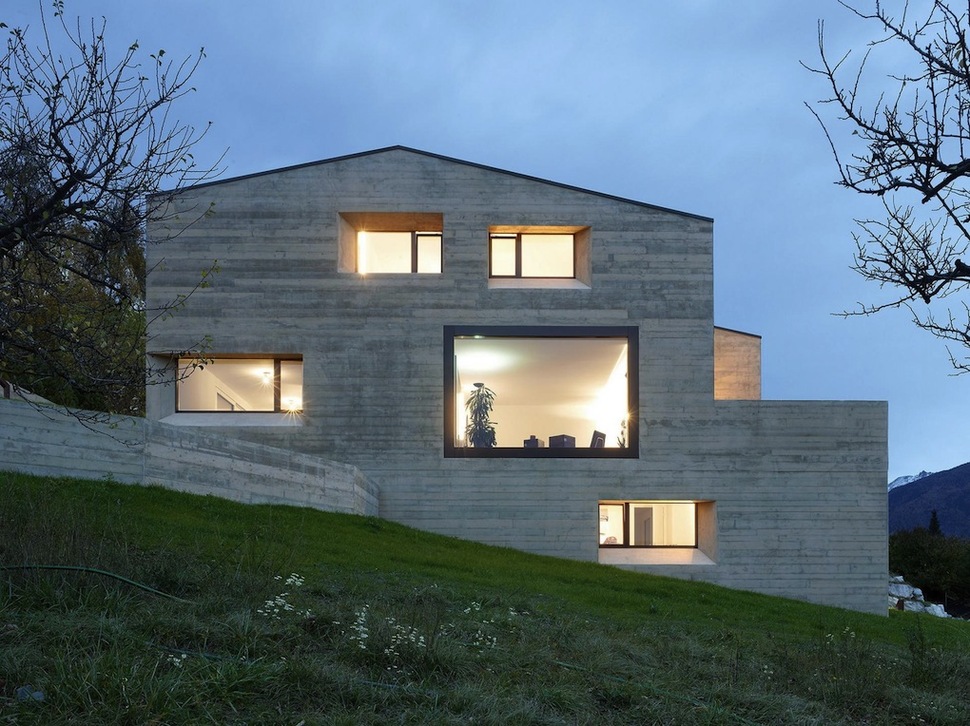
The concrete used all around the house is intended to appear as a fusion of the tones and textures of wood and stone from afar, applied in plank-like sections to further enhance that impression. By night, warm light spills out from more than a dozen window panes around the residence.
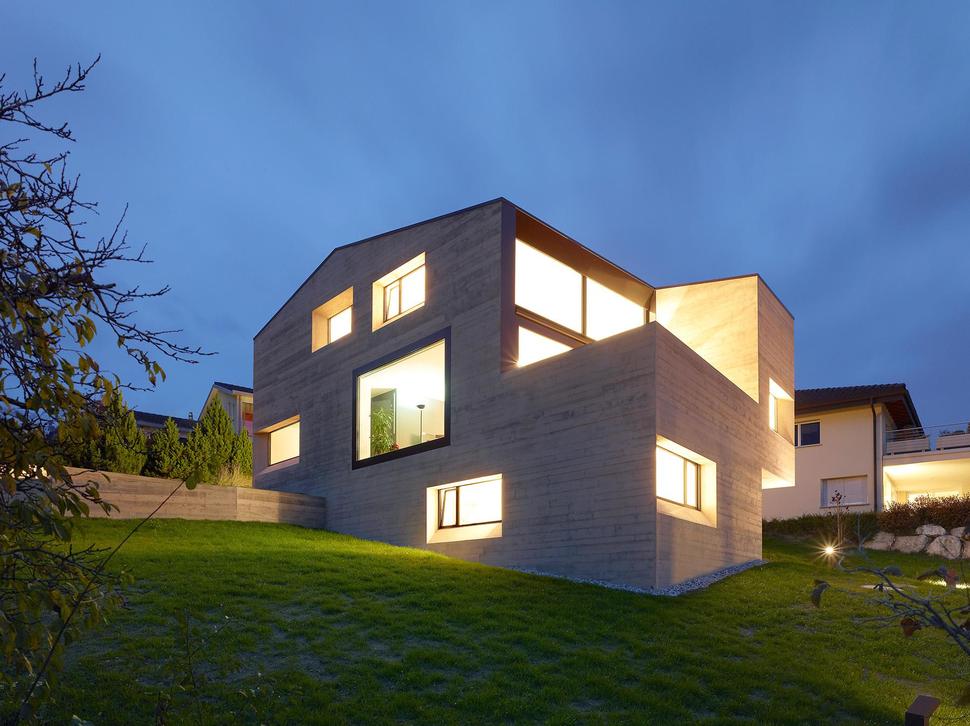
There is glass space of every size and shape on each and every face of the residence. While most of these windows are set into the concrete walls with angular cutouts, a few major arrays are mounted flush with the house’s facade.

At some angles the dwelling appears more contemporary, and from others it appears more conventionally laid out. Here, a corner portion of the second and third story seems to float in its own tiny, separate wing despite its seamless integration into the interior floorplan.
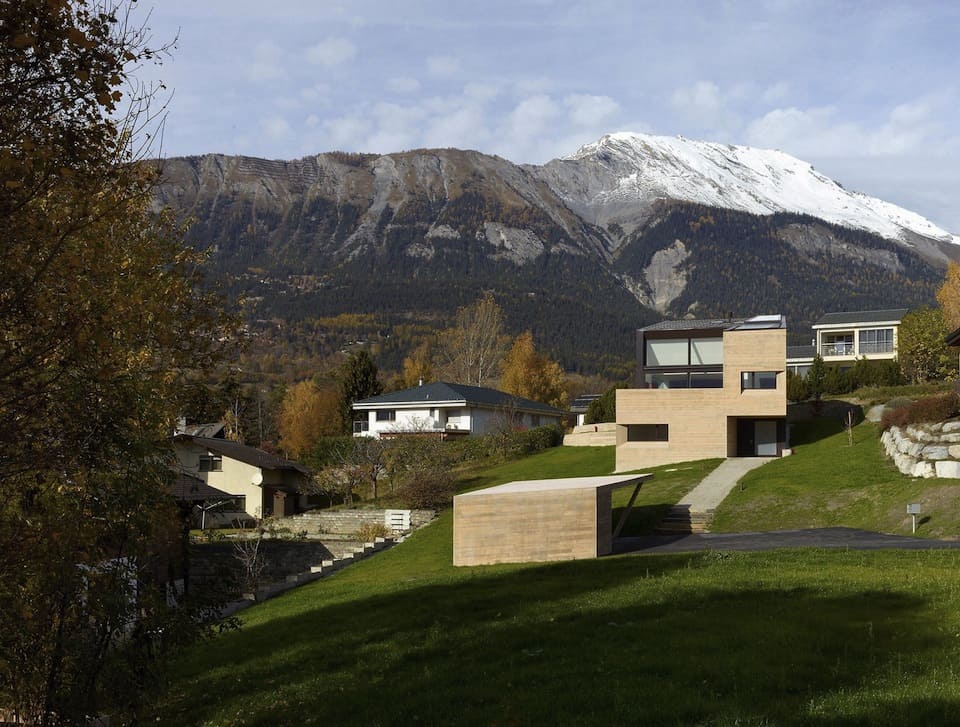
The property features an architecturally matching carport at the bottom of the lot, and simply stunning Swiss mountain views from every outward angle.
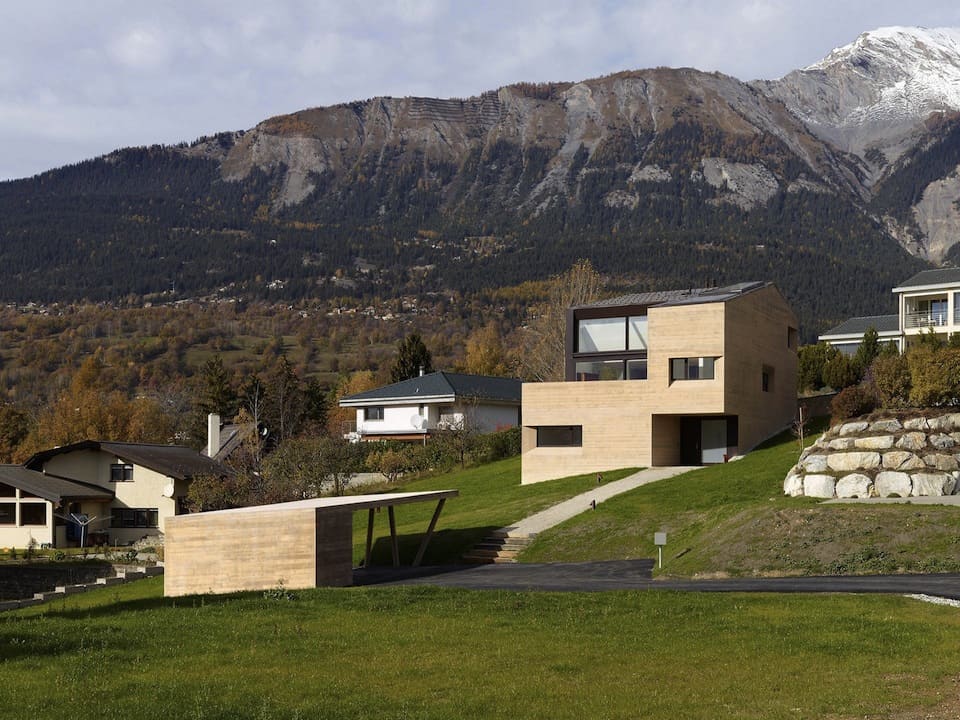
From this distance, especially, the concrete exterior could be easily mistaken for wood or other stone types.
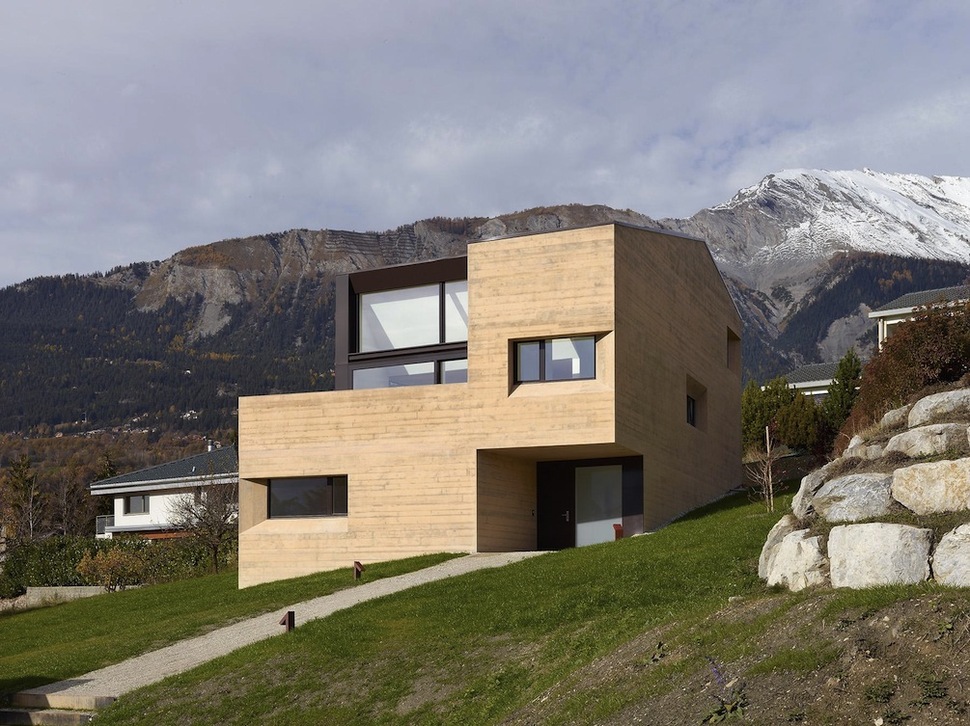
There are entrances on opposite ends of the dwelling, but the most-used doorway is here on the bottom floor, where a porch space is carved out underneath the second story, up a path from the carport’s corner.
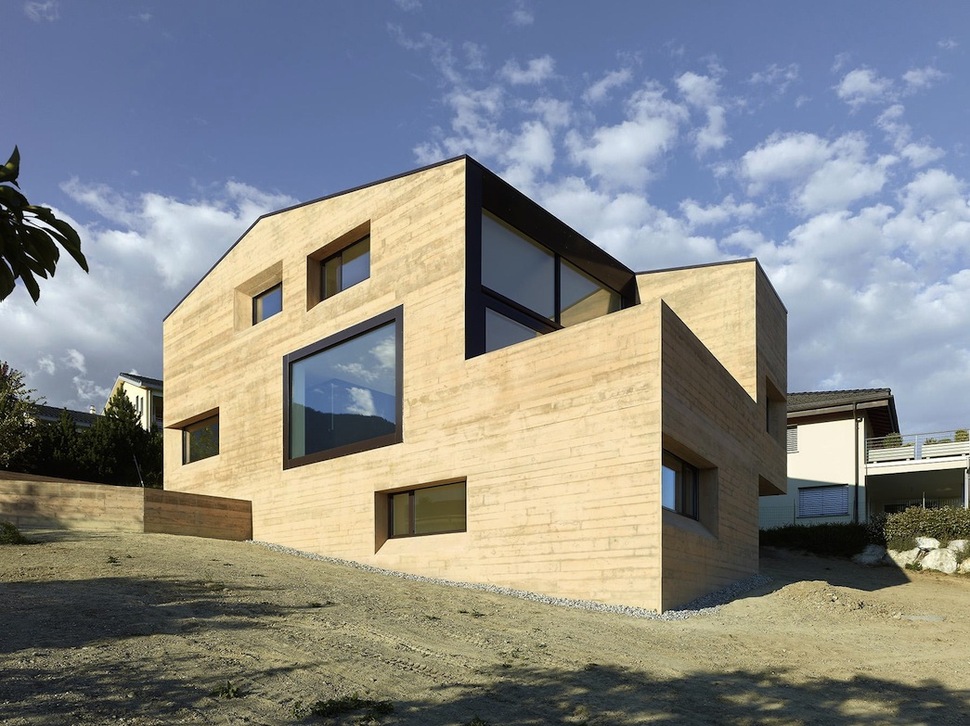
After the construction of the residence and its garage, the grasslands around it were completely cleared and replanted with a layer of brand new lawn grass. Additionally, the sloping hillside was reformatted into three tiered plots near the top portion of the property, extending the geometry of the building outward.

The true scope of the dwelling is seen from this side, where a gap in the trees at the property’s edge shows all three of it stories directly in front of you.
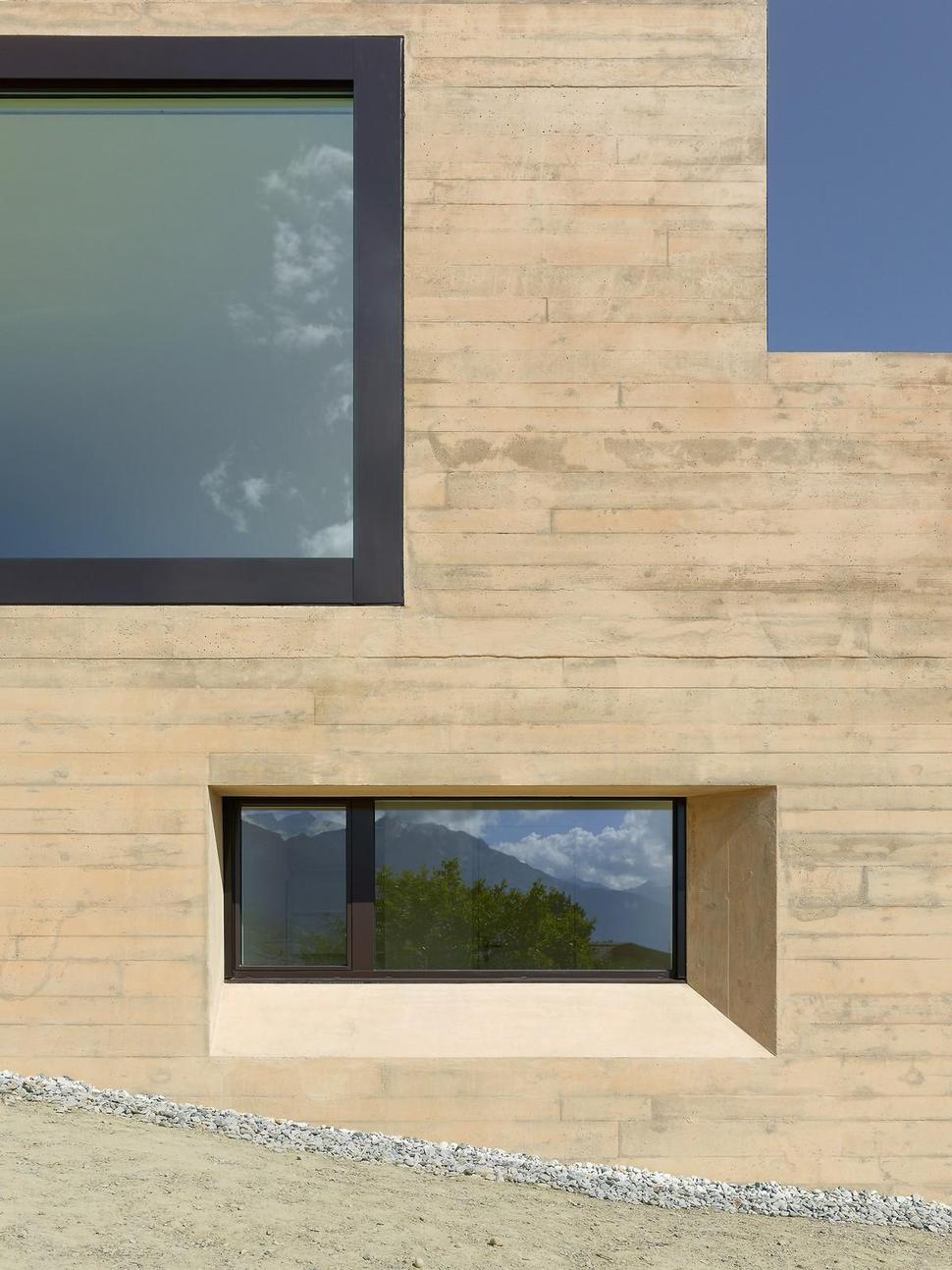
One of only two windows on the bottom of the three levels of the residence is this short window in an office space placed next to the guest bedroom.
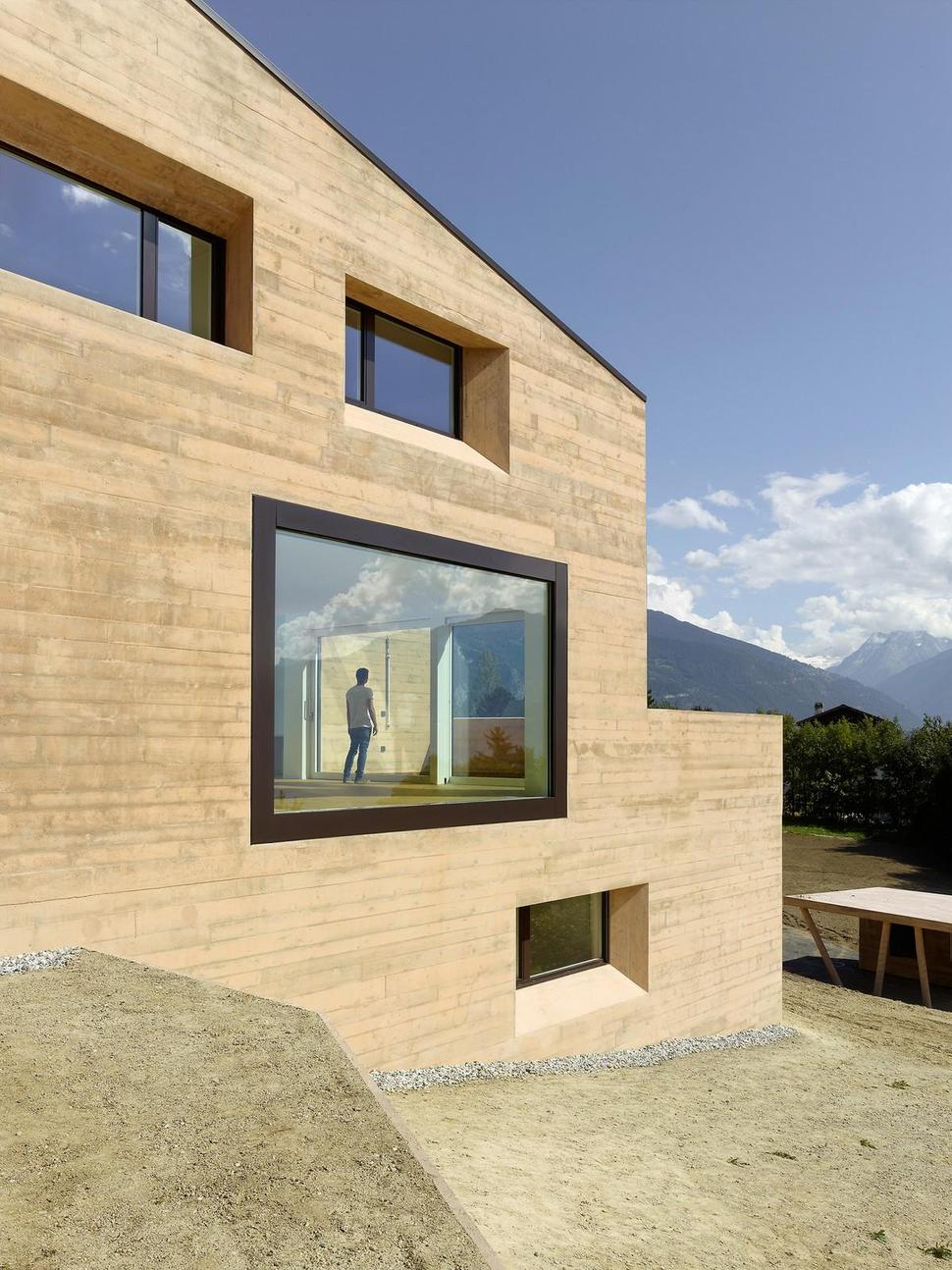
The largest side window of the house is this floor-to-ceiling glass space on the edge of its living room, set apart further from the warm concrete exterior by a thick black frame suggesting that of a portrait and a setting right at the edge of the wall instead of embedded within it.
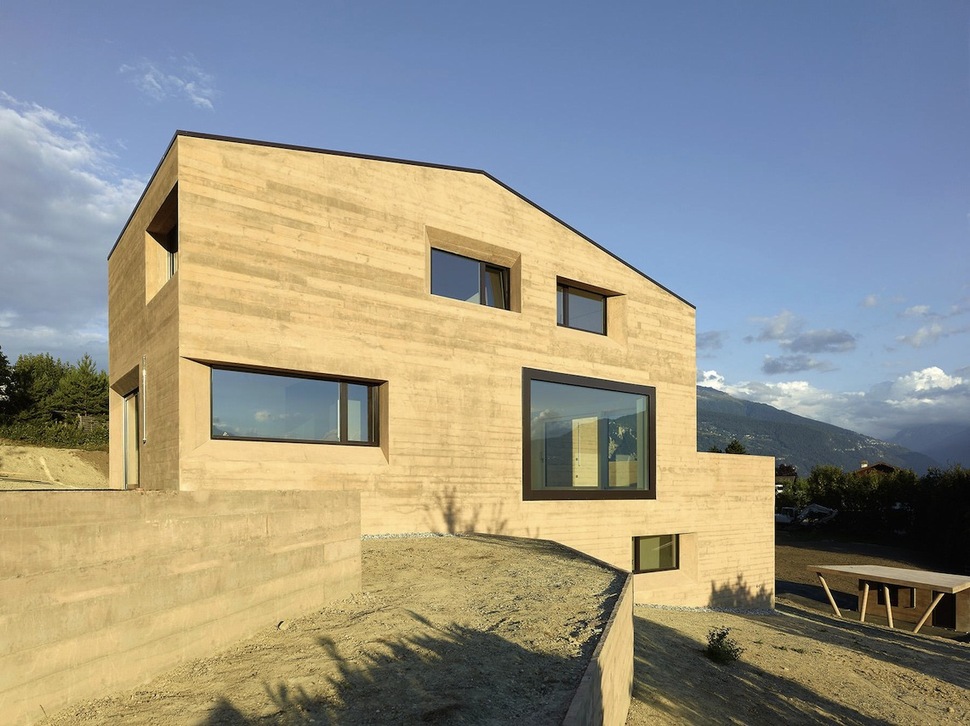
Certain details of the house’s shape, such as its gently peaked roofline and inset bedroom windows, are reminiscent of traditional residential architecture cues, instilling a sense of comfort and homeyness into its design.

Fully planted, the multi-tier lawn provides plenty of space for children to play or for the homeowners to host guests.
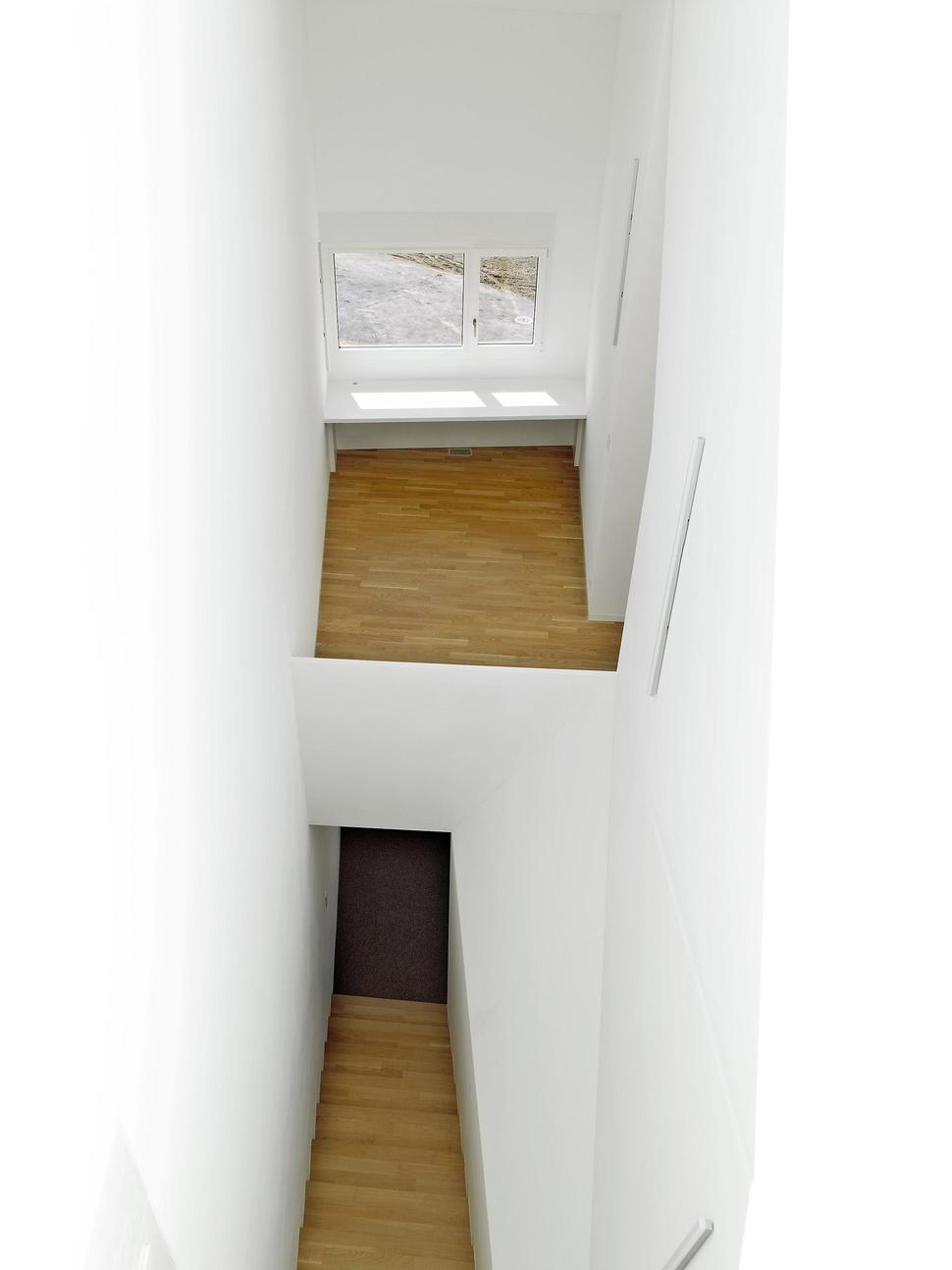
Since the lowest level of the house is mostly submerged and contains much of its supporting structure, only a single set of rooms (a guest suite and an office) is placed there. Above the door and set off of the living room on its own, a small sitting area offers its own private view out over the countryside.
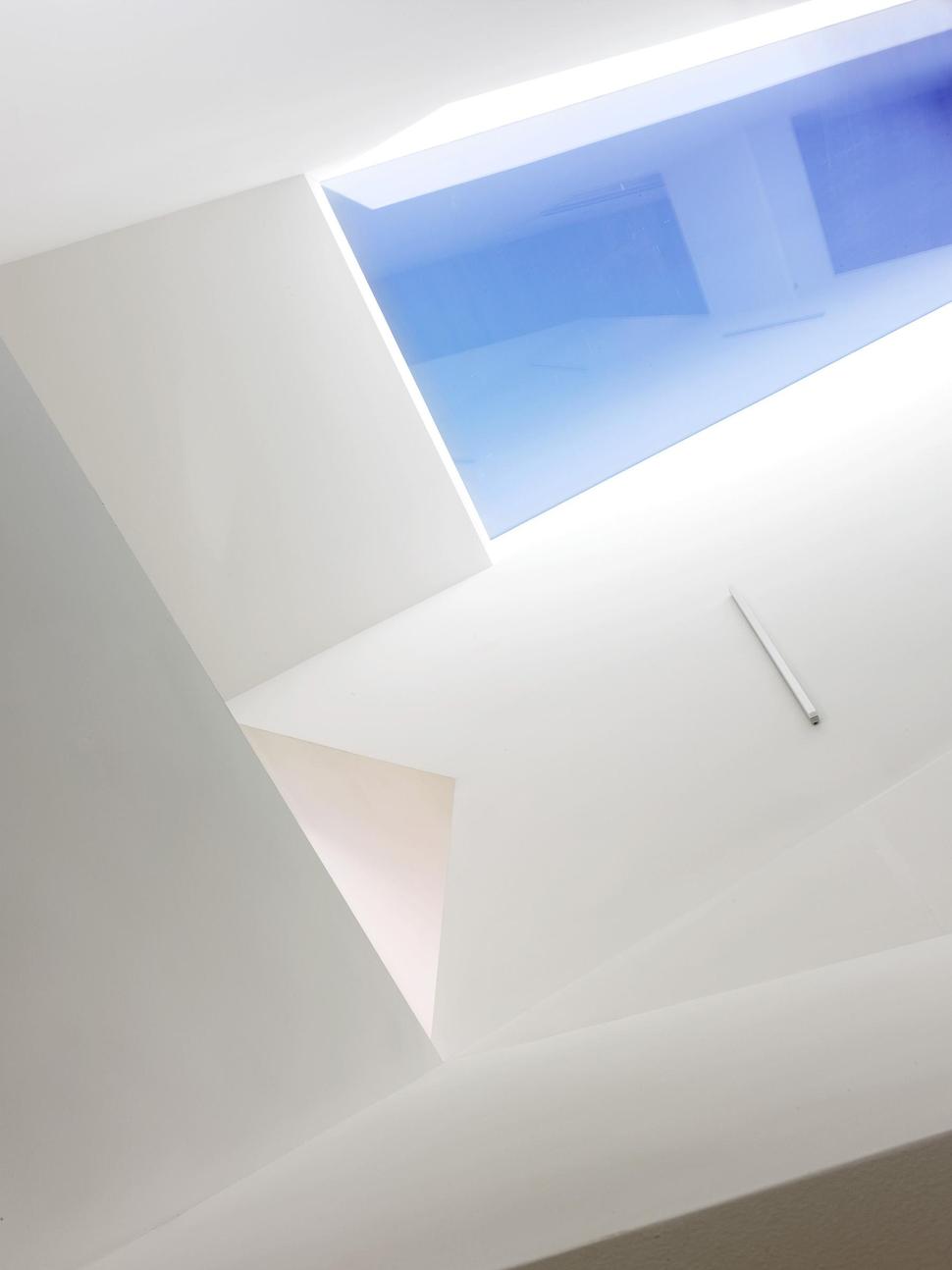
Above, a long skylight forms the top of a varied and angular ceiling profile, casting compelling shadows and reflecting light off each white ceiling section in a unique way, causing a variance in tone between differently-angled portions overhead.

At the top of the entry steps, the angular wall and ceiling structure of the stairs give way to clean right angles and a minimalistic white-hued focus. All the rooms of the house utilize a universal flooring pattern made up of bright, polished wood boards.
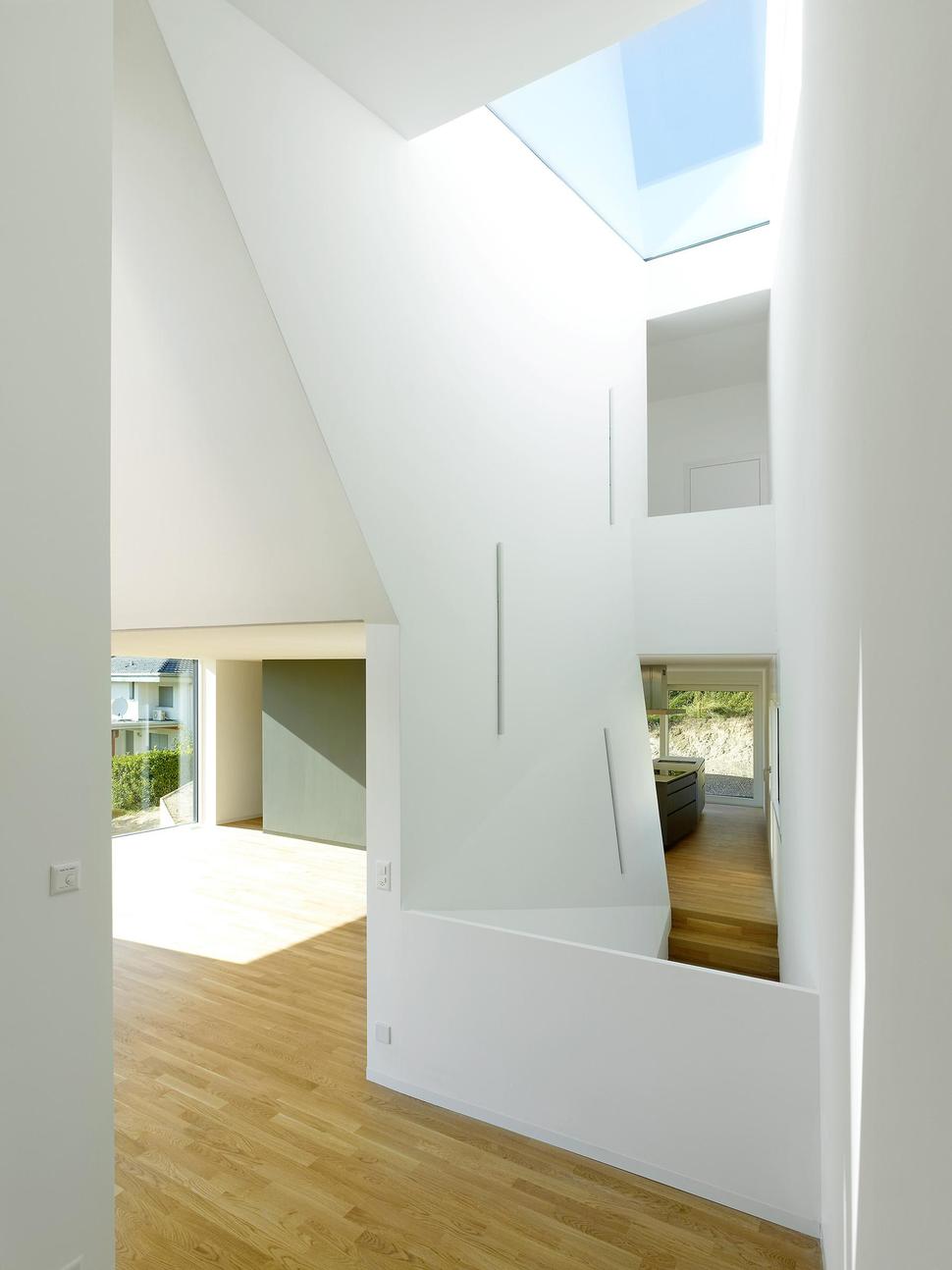

The kitchen features the darkest finishes of the entire interior, with black, smooth surfaces on its countertops, storage, and cooking areas. A square module next to the home’s upper staircase contains an oven, a pantry, and (on the opposite edge) a built-in bathroom.
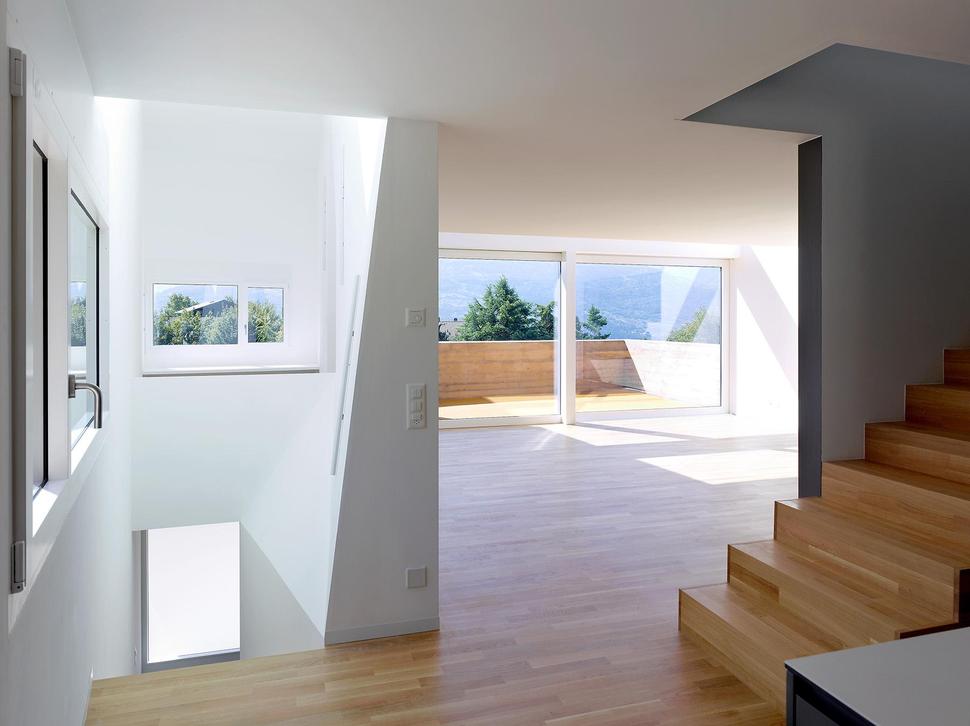
A spacious living room’s bounds are defined through its separation from the kitchen by the staircase leading to the upper floor, but traffic flow through each main-floor space is kept open without physical barriers in between any two areas.
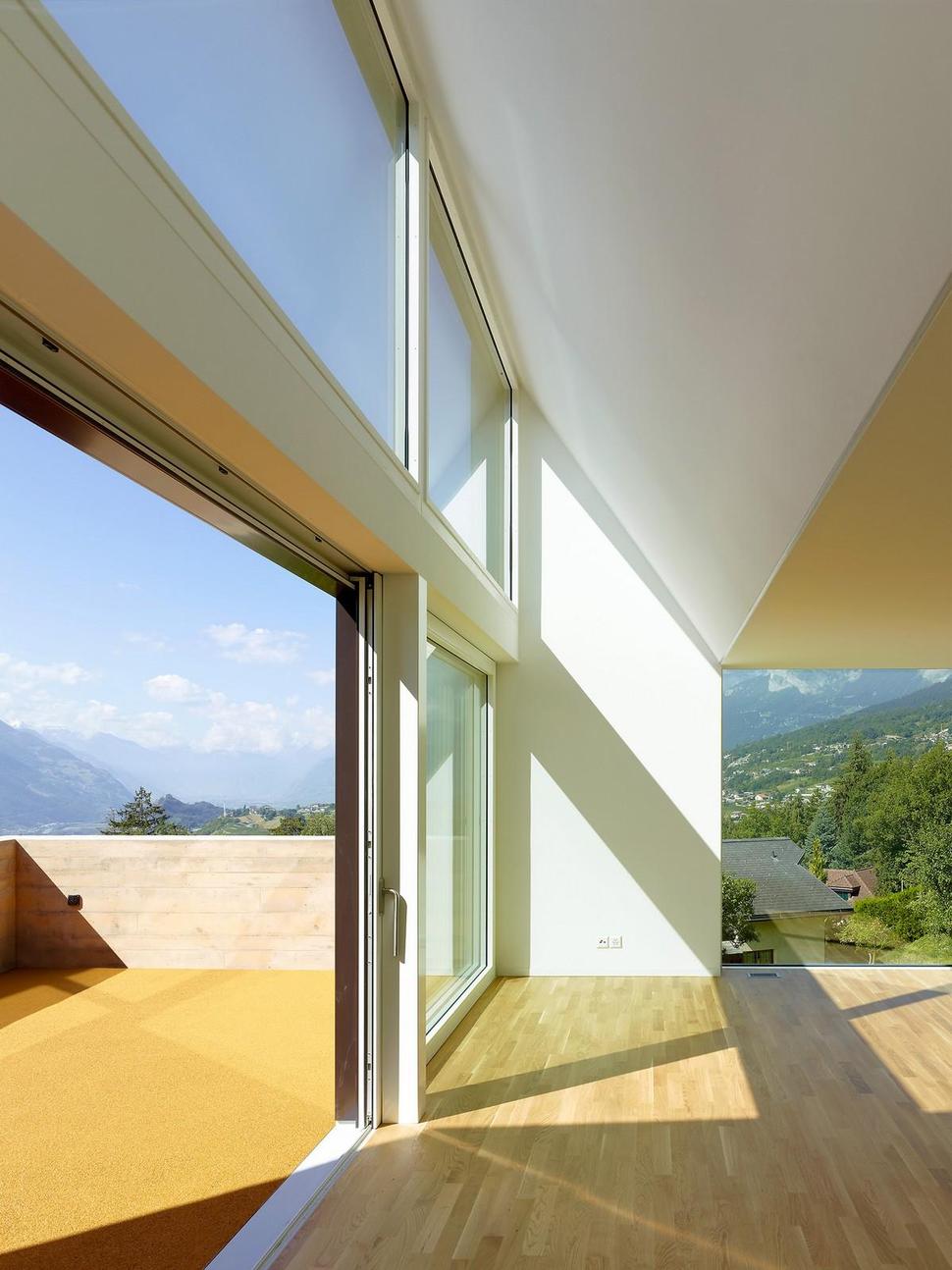
A deck off the living room can be accessed through a wide sliding door, creating space for outdoor recreation and relaxation without exiting the actual boundaries of the home’s structure. During warm months, the door can be left open to effectively extend the living room’s scope, joining the two spaces into a single gathering place.
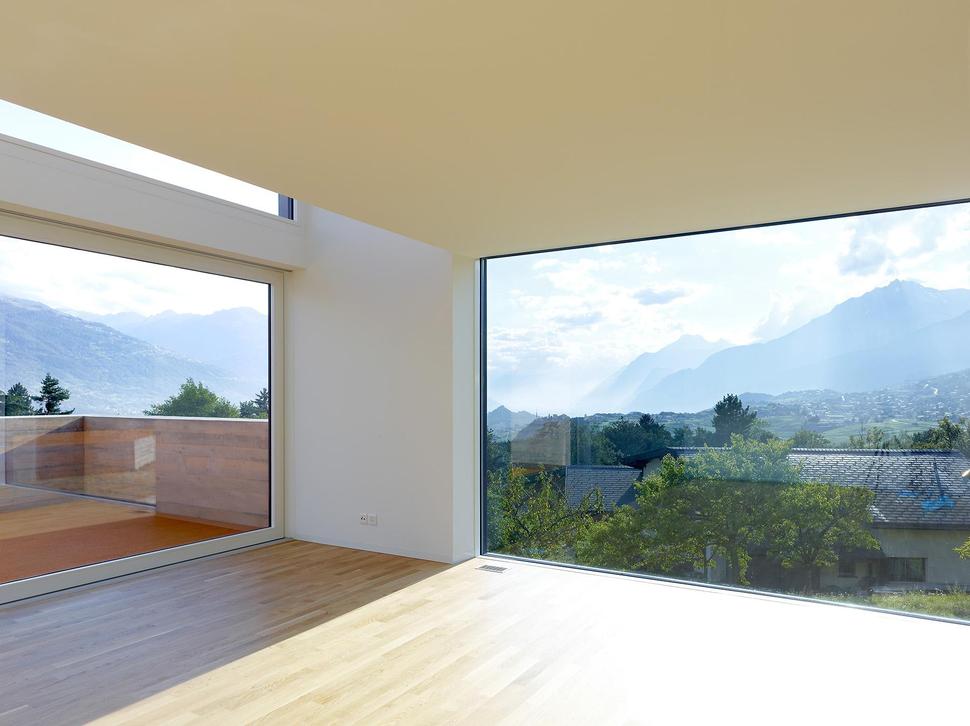
The main floor includes windows of various sizes on every side, but those windows reach full wall height and length near the rear, where the building’s architectural profile soars over the landscape and offers impressive mountain valley views.

The last vestige of the kitchen’s black finishes creep up the staircase banister to the top floor of the dwelling, where a master suite and two smaller bedrooms reside. The master bedroom has walk-out access to the home’s elevated rear deck, and each room has a unique view out a different side of the home.
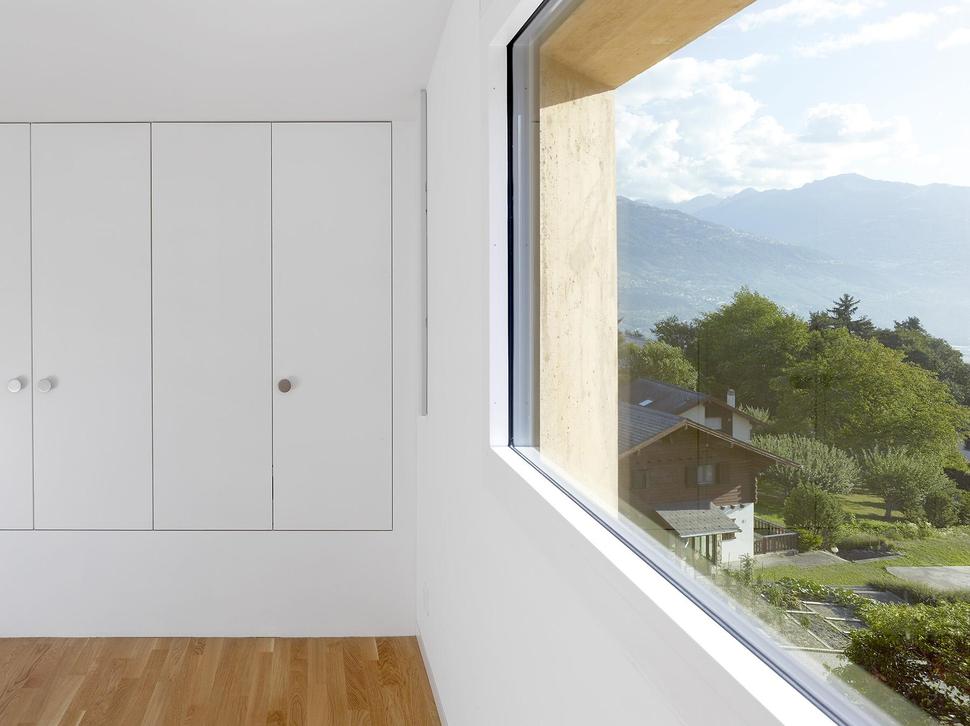
Each bedrooms contains a set of built-in shelving set into its walls, a minimal way to create storage space without adding a piece of wardrobe furniture or an entirely separate closet area.

The home’s bathroom has the same mix of wood floors and white walls that dominates most rooms inside, but appears to be more whitewashed than other areas because of its notable absence of windows. Due to the proximity of the house to other residences, its bathrooms are fully contained in traditional walls (though solutions such as this wide full-length mirror help create a greater sense of space).
Evéquoz Ferreira Sàrl
